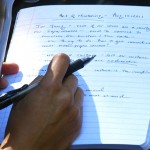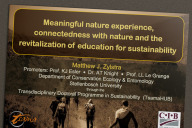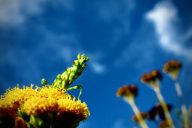Is nature connection really only possible when embedded in the fabric of healthy community? The 2011 Art of Mentoring (AOM) course in the Santa Cruz Mountains sought to answer this question by simulating the process required to re-discover our connections to nature, ourselves and community.
I am glad I am not a journalist. I am here behind my laptop stumped by how to succinctly summarize the 8Shield Institute’s Art of Mentoring (AOM) workshop I attended in the Santa Cruz mountains between 14th – 19th August, 2011. I’m thinking,”Right, if I was a journalist who attended this course, what angle would I take? “Would it be a summary of the workshop itself, the topics covered… or would it be my own experience of the workshop in terms of what I got out of it? Would I critically review the workshop or would I lavish it with glowing praise? Ideally, I would just like to say: “Attend the workshop to experience it”, and then I’d be done…
Because it was really that kind of week for me. Since completing the course, friends and colleagues have asked me: “What was it about? What did you do? Did you enjoy it?” And I have been attempting to answer their questions each time though I am unsure if I am really giving the best answers.
Did the course meet my expectations? I still unsure but I honestly do not think so. But I believe that is actually a really good thing. Because I went in with fairly narrow kind of expectations. I was keen to enhance and explore my own nature connection, to cultivate my own meaningful nature experiences and somehow emerge – after just one short week – as this maverick tuned-in wilderness man who could now intuitively track and then bare-back ride a buffalo bound and blind-folded. So that did not happen (although I have not yet encountered any buffalo since). And I also hoped we would deeply explore all the juicy theory behind some of this nature connection in intimate learning circles. Whilst we covered some intellectual snacks (like brain patterning and neurological research), we did not really gorge ourselves with a 4-course meal of information indulgence. And, again, this was actually a good thing – because that would be contrary to authentic nature connection. As the facilitators note: “Facts get in the way of learning …”

I have a wad of notes jotted down from the week. But if you asked me straight up what I remember most, it would be the people. The workshop brought together 100+ of the most grounded earthy persons with genuine humour and talents (both as naturalists and musicians) that I have come across in a long time. As a well-travelled individual, I would like to think I have a fairly good handle on the global spectrum of human character. So, apart from making me a touch envious, the attendees really inspired and generated hope for humanity.
In some cases, I felt as though I made real soul connection with another and, on other occasions, it was a bizarre case of, “what are the odds of meeting you here?”. It was easy to open up with this kind of crowd, the type of gathering where ego and pretense fades away into the background. Where talk of synchronicity – be it with nature or in life in general – is naturally commonplace and matter-of-fact without being hippy or esoteric. The workshop even touched on synchronicity as being an important ‘change agent’ with respect to our relationship with nature.
The workshop was as experiential as it was a simulation. The simulation side aimed to create what a nature-connected community would look like in practice. So whilst the nature connection activities were covered, the core theme here was that nature connection is only as good as – or even only possible when – there is a ‘community container’ within which it is embedded… or a firm cultural fabric through which this nature connection can be woven.
The activities we engaged in as a ‘community’ were a highlight: when was the last time I could play games and crawl around in the grass and not feel self-conscious? And at the same time defend it by saying I am doing it in the name of nature connection or, even, scientific research? And then there was the music and songs which were shared which I have had playing in my head since. However, my overall unexpected meaningful moment was the ‘men’s circle’ on the fourth day, which feels a bit odd to admit at first. But it was highly powerful and fully engaging. And all it seemed to take as getting all the blokes together in a circle and opening up over some critical questions of our time, although clearly it was also a product of some skilled and seasoned facilitation. I understood more why men are primordially drawn to hanging around fireplaces and barbecues. But more often than not we use this ideal shared setting to instead gaze silently and somberly into the flames while avoiding discussing the meaty stuff. So this was needed tonic.

In summary, the week was about exploring the things that connect us: to ourselves (self), to each other, to nature and to spirit. This is what real community fosters. And we in Westernized societies have long lost that kind of community fabric. So the next task for humanity is cultural repair – a re-designing process which can only come through having the regeneration firmly founded in nature connection. But where are our elders? Where our mentors? What about the lost rites of passage into adulthood? Where are our community roles and responsibilities? Where are our random acts of kindness? Where is our selfless giving for the service and growth of community? Our inner-work? Our rituals? Our ancestral honourings? Our commitments to community?
These are just some of the tasks which lie before us. It appears a daunting call but yet is a path which promises fulfilment at a level for which most of us have no reference point. So once experienced – even fleetingly – it compels one to keep going. I am grateful to all involved in 8Shields and Art of Mentoring for doggedly spearheading an authentic response to the real challenges of our time – and preparing their graduates to do the same.
References:
Further information about Art of Mentoring: http://8shields.com
Further reading: Young, J., Haas, E. and McGown, E. (2010) Coyote’s Guide to Connecting with Nature. 2nd Edition. pp548. Owlink Media Corporation, Washington.












Be the first to share a comment